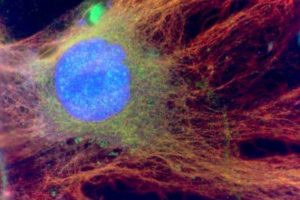Columbia
Researchers show environmental changes may affect vital cooperate bird behaviors
New York, Jan. 11, 2011 — While scientists believe that climate change and related extreme weather events such as drought and flooding will likely affect the earth’s flora and fauna, just how much is not known. A new study by researchers Walter…
Bacteria eyed for possible role in atherosclerosis
Dr. Emil Kozarov and a team of researchers at the Columbia University College of Dental Medicine have identified specific bacteria that may have a key role in vascular pathogenesis, specifically atherosclerosis, or what is commonly referred to as “h…
Early role of mitochondria in AD may help explain limitations to current beta amyloid hypothesis
(NEW YORK, NY, October 13, 2010) — Before Alzheimer’s patients experience memory loss, the brain’s neurons have already suffered harm for years.
A new study in mouse models by researchers at Columbia University Medical Center has found that …
Ancient fault lines may have become re-activated
On June 18, 2002, a magnitude 5.0 earthquake occurred in southern Indiana, followed by a 1.2 magnitude aftershock on June 25, 2002. Because the region of occurrence, the Wabash Valley Seismic Zone, is seismically active, Dr. Won-Young Kim, a seismologist with the Lamont-Doherty Earth Observatory at Columbia University, conducted research to determine the potential hazard of future earthquakes to this region. His findings suggest that an ancient fault line dating back to the Precambrian era of geological history (from 4.6 billion to 570 million years ago) has become reactivated and was the likely cause of the June 2002 earthquakes. Kim is presenting his findings at the Seismological Society of America in May, and publishing in the Bulletin of the Seismological Society of America.


